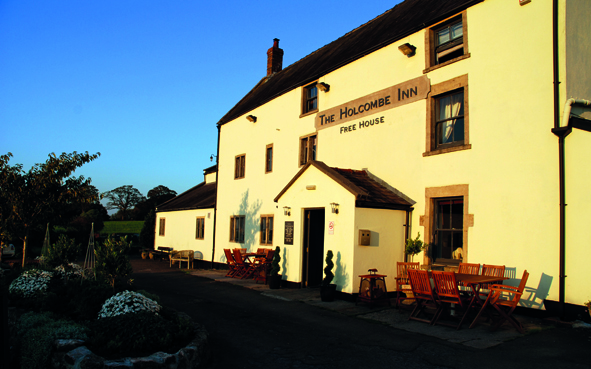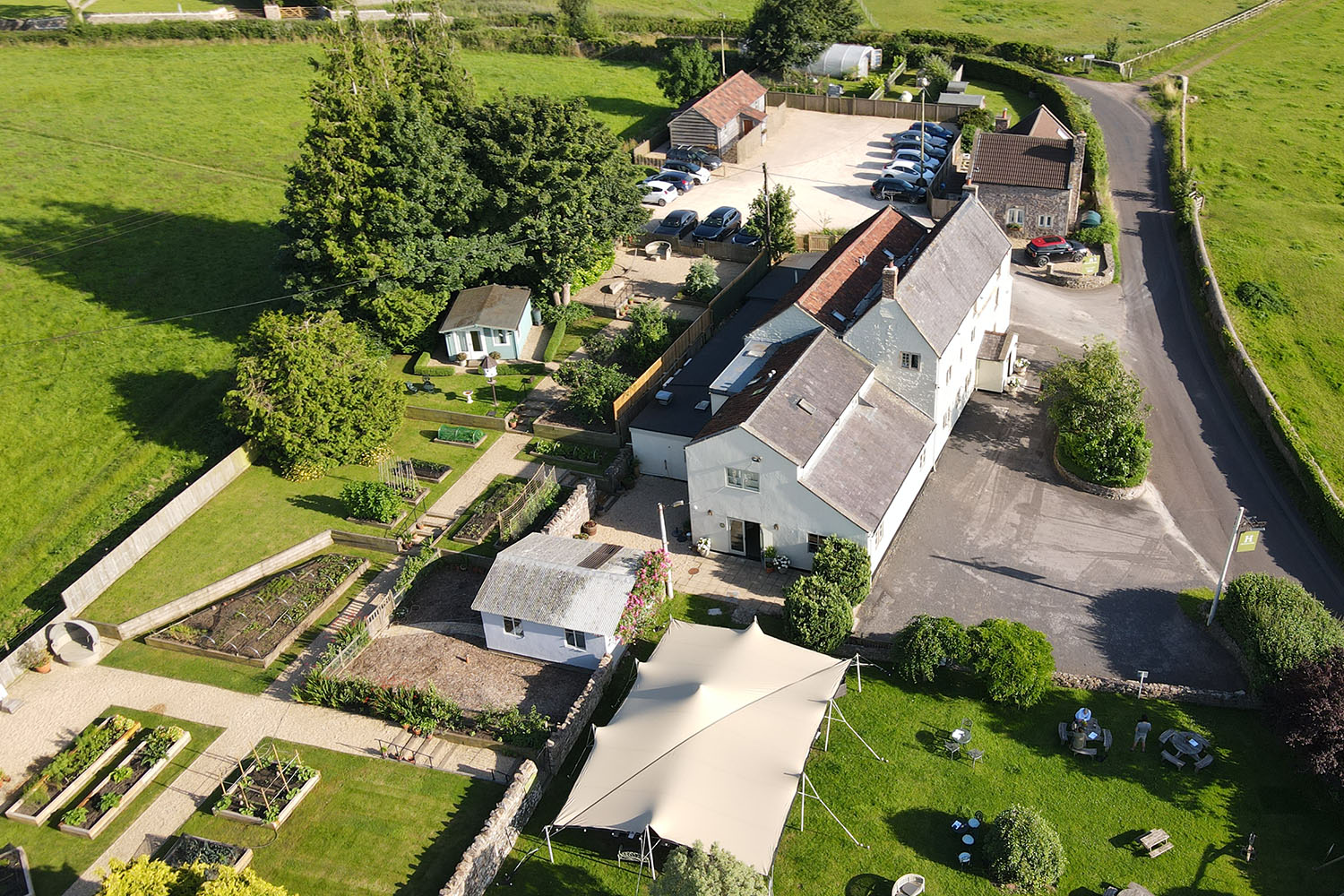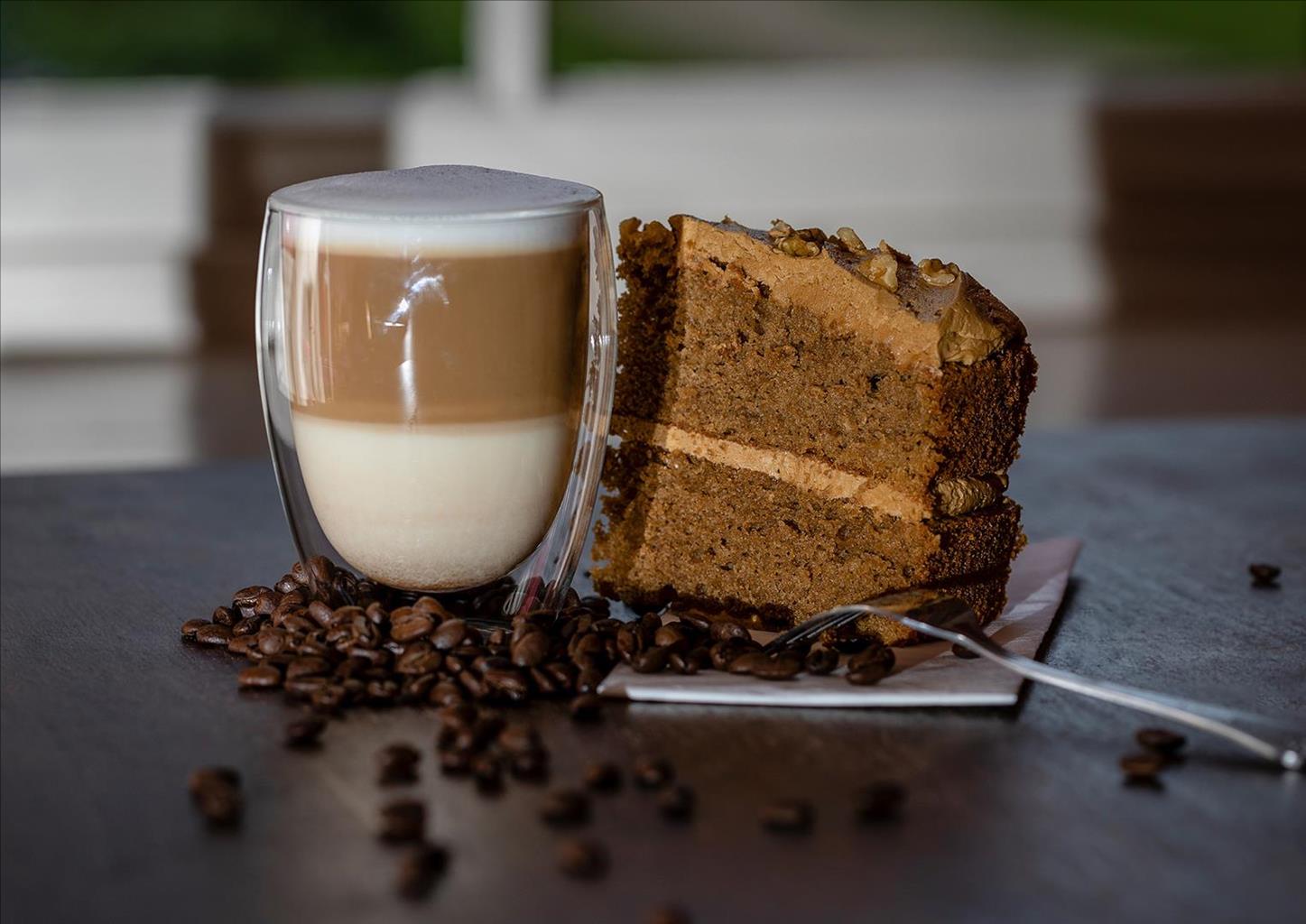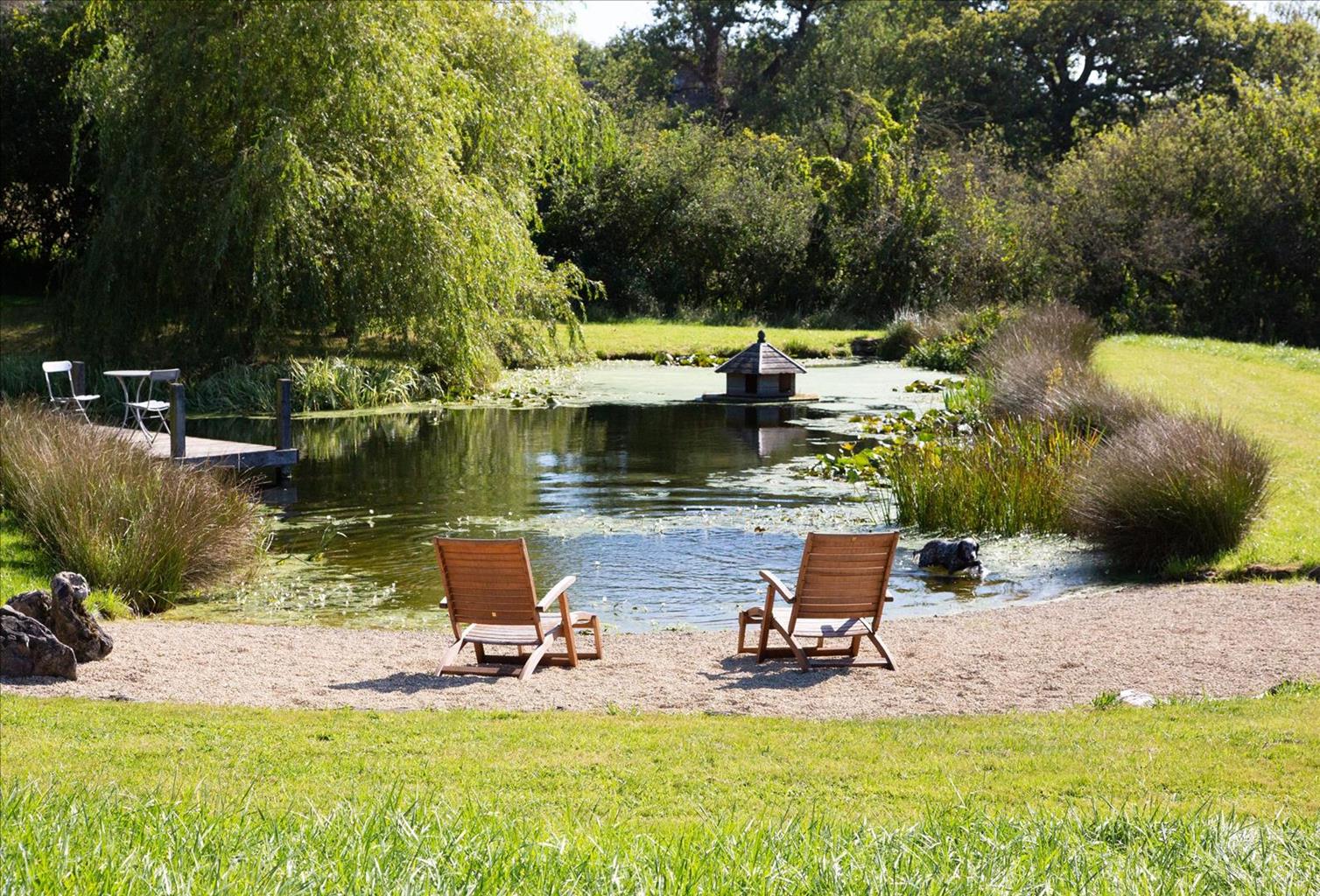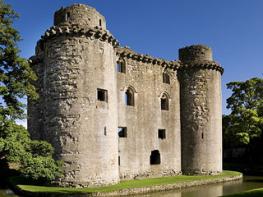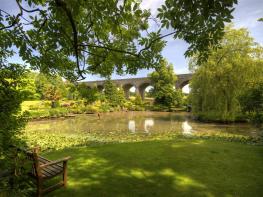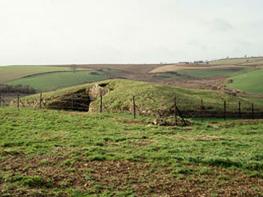Tucked away in 30 acres of grounds, The Lighthouse offers a range of beautifully presented…
Around Nunney

5.75 miles (9.3kms)
About the walk
Rather than dominating the village as would normally be the case, Nunney's castle is rather tucked away behind the houses and you might pass it by. However, it is a sight to behold and worth seeking out. Tall and intimidating, the castle is completely surrounded by a moat and, despite being breached by Cromwell's troops during the Civil War, remains an impressive structure that was considered by Pevsner to be 'the most impressive in the county'.
It wasn't built until the 14th century, when Sir John de la Mare sought licence to fortify his existing manor. He'd battled his way through France with Edward III and may have been impressed with the new fashions in defensive architecture that he'd seen there. Four round corner towers and a wide and deep encircling moat would certainly have made any would-be assailant think twice, but John was perhaps more concerned in having a status symbol that gave him a degree of relative comfort. His effigy lies in the church with four other members of the family, interestingly depicted clad in the costumes of their day.
Local industry
The village once had both a market and fair, the latter being lately revived in an old fashioned street fair each August. During the 18th century, many of the village folk supplemented their income with cottage weaving. Wandering through the streets, you'll notice the abundance of windows to let light in on the looms, while the stream running at the backs of houses was used for washing the finished cloth. The George is an old coaching inn, an archway leading through to a rear courtyard and stables. Its sign, although a modern replacement, is still displayed on a gantry spanning the street, ensuring it doesn't miss out on potential customers.
As weaving and iron tool making (centred at nearby Mells) declined, the growing popularity of the newly invented motor car fuelled a new local industry in the supply of road stone. Although capable of death-defying speeds, the new contraptions just couldn't cope with the rutted tracks that the pack horse jiggers and carters had endured for centuries and a limitless supply of crushed stone was needed to upgrade the country's roads. In consequence, the village is surrounded by quarries, some still very much in use, while those that have been abandoned are reverting to nature and, rich in plantlife, have been designated SSSIs.
Walk directions
A path leaves the rear, right corner of the car park. Keep right to come out on a street and follow it down into the village. Turn left in front of the Castle Kitchen, walking right past the castle moat and over a bridge to emerge opposite the church. The George lies just to the right, but the onward route is left, soon branching off along Donkey Lane. Where that bends left to Combe Farm, keep ahead through a gate on a wooded track beside Nunney Brook. Stay with this bank for 0.5 mile (800m) before swinging left over a bridge and up to a lane.
Through a kissing gate almost opposite, head upfield to another kissing gate. Walk on, initially by the left hedge, but as it curves away, keep ahead to a stile immediately right of a cottage at the far side. A track leads out past the former Sun Inn to a lane at Whatley. Go left to a bend.
Leave along a track beside the Old Rectory, forking left to find a small gate at the track's end by Whatley Cottage. Go forward, passing right of another house, along a contained path into a field. Strike across to a stile and head down towards trees. Turn left along the field bottom, ultimately dropping from the corner onto a busy road.
Carefully cross to a path almost opposite and climb through a tangled wood opposite Whatley Quarry. Reaching an old yew, swing down right to continue beside Forbury Water. Eventually entering a rough field, carry on to the far corner. Bear right over the stream and leave through a gate by Railford Bridge.
Follow the lane back over the bridge and up the hill. Approaching outbuildings of a house, turn sharp right on a path into another wood. It eventually drops through the trees to a narrow lane opposite Manor Farm at Chantry. Head left uphill to meet a main road.
Go left and almost immediately right along a wooded bridle track, skirting the perimeter of a concealed quarry. Emerging onto another road, head downhill before abandoning it for a quiet lane towards Nunney.
After 0.25 mile (400m), turn off right and drop past cottages. Rounding a sharp bend, leave along a narrow path off left that drops to a footbridge over Nunney Brook. Turn left, passing through gates into a riverside industrial yard. Walk though, exiting its far end along a rough, wooded path beside the stream. After 200yds (183m), beneath a limestone outcrop, climb right to a stile and continue up the left field edge. At the fence corner, swing left, aiming for Nunney's church to reach a kissing gate at the corner of more woodland. Keep going by the left boundary to another kissing gate and drop down steps to a bridge across the stream. A track winds into the village. Walk right down towards the centre and then go left up Castle Hill back to the car park.
Additional information
Largely riverside and woodland paths, occasionally rugged, with some fields and short stretches along lane
Deeply wooded stream valley, breaking out into open pasture with extensive views
Well-behaved dogs can run free in Nunney Combe and on final track
OS Explorer 142 Shepton Mallet
Nunney Castle car park (free) 250yds (230m) up Castle Hill from village centre
None on route
WALKING IN SAFETY
Read our tips to look after yourself and the environment when following this walk.
Find out more
Also in the area
About the area
Discover Somerset
Somerset means ‘summer pastures’ – appropriate given that so much of this county remains rural and unspoiled. Ever popular areas to visit are the limestone and red sandstone Mendip Hills rising to over 1,000 feet, and by complete contrast, to the south and southwest, the flat landscape of the Somerset Levels. Descend to the Somerset Levels, an evocative lowland landscape that was the setting for the Battle of Sedgemoor in 1685. In the depths of winter this is a desolate place and famously prone to extensive flooding. There is also a palpable sense of the distant past among these fields and scattered communities. It is claimed that Alfred the Great retreated here after his defeat by the Danes.
Away from the flat country are the Quantocks, once the haunt of poets Samuel Taylor Coleridge and William Wordsworth. The Quantocks are noted for their gentle slopes, heather-covered moorland expanses and red deer. From the summit, the Bristol Channel is visible where it meets the Severn Estuary. So much of this hilly landscape has a timeless quality about it and large areas have hardly changed since Coleridge and Wordsworth’s day.
Nearby stays
Restaurants and Pubs
Nearby experiences
Recommended things to do
Why choose Rated Trips?
Your trusted guide to rated places across the UK
The best coverage
Discover more than 15,000 professionally rated places to stay, eat and visit from across the UK and Ireland.
Quality assured
Choose a place to stay safe in the knowledge that it has been expertly assessed by trained assessors.
Plan your next trip
Search by location or the type of place you're visiting to find your next ideal holiday experience.
Travel inspiration
Read our articles, city guides and recommended things to do for inspiration. We're here to help you explore the UK.

